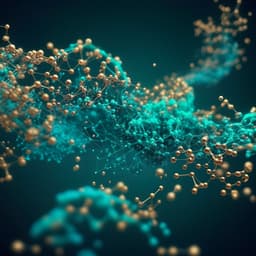
Medicine and Health
Integrated multi-omics analyses reveal homology-directed repair pathway as a unique dependency in near-haploid leukemia
Y. Liu-lupo, J. D. Ham, et al.
This groundbreaking research conducted by Yunpeng Liu-Lupo, James Dongjoo Ham, Swarna K. A. Jeewajee, Lan Nguyen, Toni Delorey, Azucena Ramos, David M. Weinstock, Aviv Regev, and Michael T. Hemann reveals the unique genetic dependency of near-haploid acute lymphoblastic leukemia (ALL) on the RAD51B gene, proposing it as a promising therapeutic target. Utilizing single-cell RNA sequencing, the study uncovers essential insights into the DNA repair mechanisms that are critical for the survival of these cancer cells.
~3 min • Beginner • English
Related Publications
Explore these studies to deepen your understanding of the subject.







